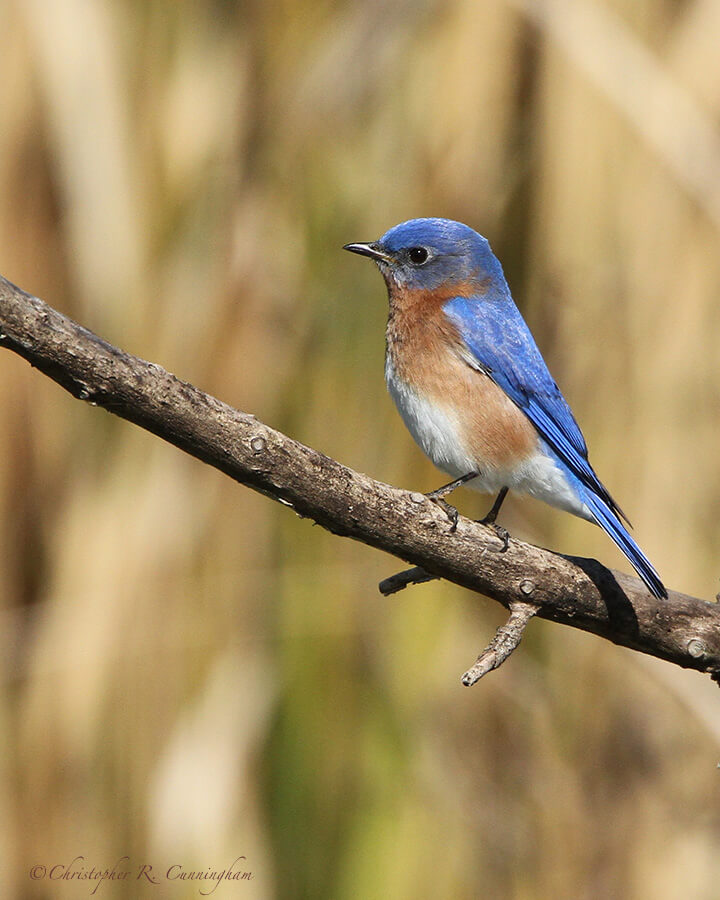
Although the vast majority of brightly-colored songbirds in Texas during the spring migration continue their journeys north, a few species remain to add flashes of color to the post-migration greenery. These include Prothonotary Warblers, Northern Parulas, Eastern Bluebirds, Painted Buntings, and Summer Tanagers.
Of course, one of the things to watch for in the spring and summer is nesting behavior. Early this spring in an area of Brazos Bend State Park much frequented by warblers and other songbirds, I identified a nest cavity being used by a mated pair of Eastern Bluebirds (male shown above). Much later in the spring, the same nest cavity was adopted by Prothonotary Warblers.
Sadly, about two weeks ago I noticed that the top of the dead tree containing the nest cavity snapped off, taking the cavity with it. Last week, too, I noticed that another nest cavity in this area was gone. The whole dead tree collapsed. This is unfortunate as this little patch of forest and slough has been a reliable spot for nest cavities and songbirds for the past several years. I spotted the male Prothonotary Warbler shown below, for example, in this same area last summer. What a reminder that things humans place no value on, like dead trees, can be vital to the health of an ecosystem.
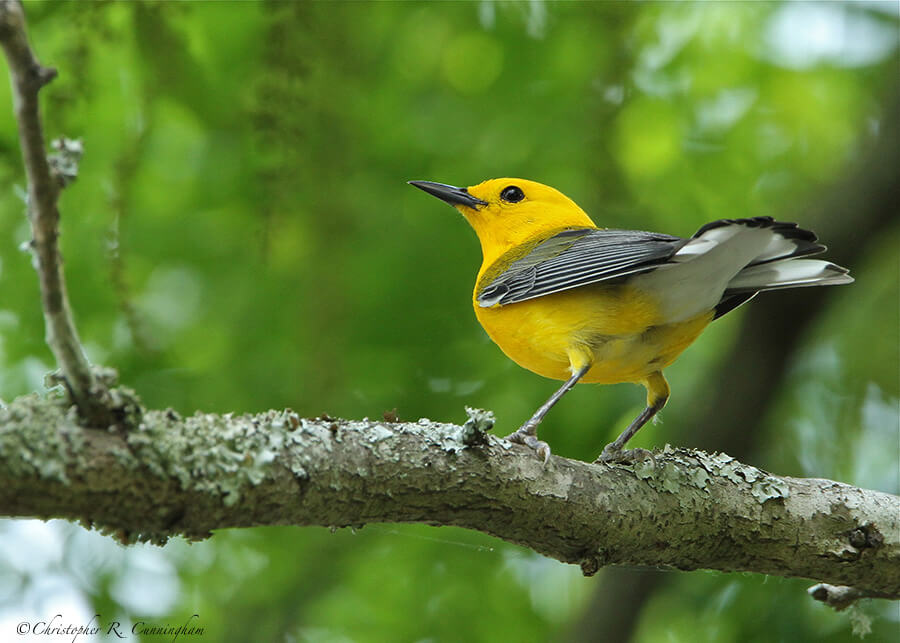
Painted buntings, especially the adult males, are among the most brilliantly-colored songbirds in North America. It’s not uncommon for people to come up to me breathlessly in the field with something like: “We saw this bird, it was . . . .” “Male Painted Bunting,” I interrupt gently.
The best place to find Painted Buntings in summer at Brazos Bend is where there are tall grasses with mature seed-heads adjacent to wooded areas (just in case a quick getaway is required). Painted buntings are so spectacular they, no doubt, will warrant a whole post of their own at some point in the future.
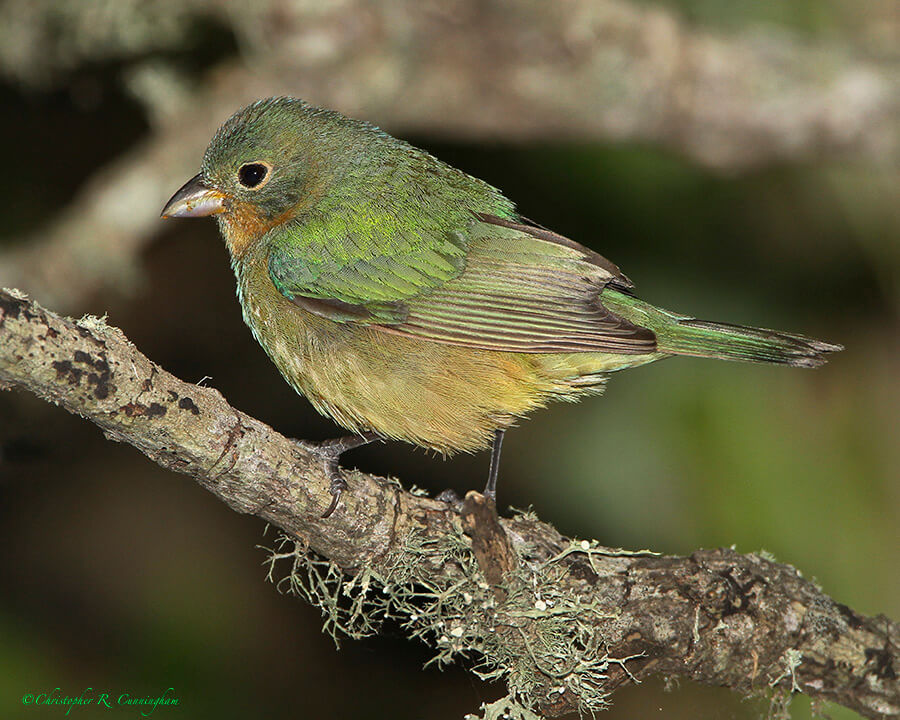
Tanagers are such prized summer sightings along the Texas Gulf Coast that I find myself double-checking every male Northern Cardinal I see. A rule of thumb is helpful when looking for Tanagers: find the fruit (especially mulberries), find the birds. Otherwise, Summer Tanagers are specialist feeders on bees and wasps. A few times I have chased Tanagers through the sweltering underbrush in hopes of getting a shot–usually to no avail. Photographing birds in the fully leafed-out summer forest is tough, and songbirds, coy creatures that they are, are not about to cooperate.
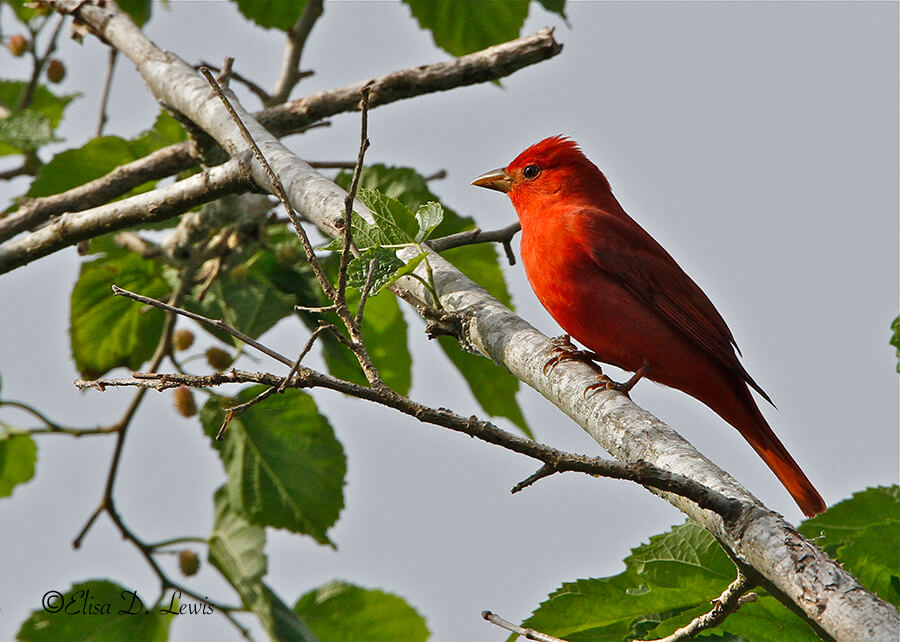
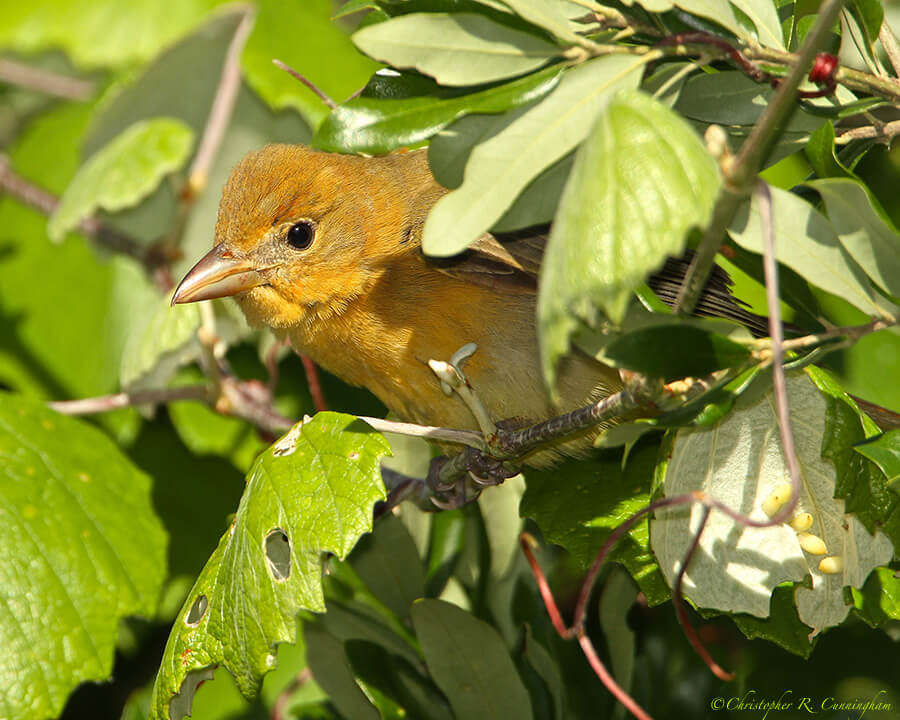
“What makes photography a strange invention is that its primary raw materials are light and time.”–John Berger
©2013 Christopher R. Cunningham and Elisa D. Lewis. All rights reserved. No text or images may be duplicated or distributed without permission.